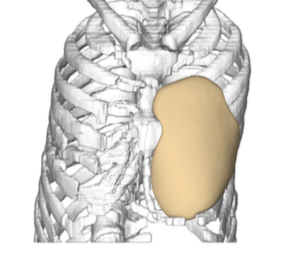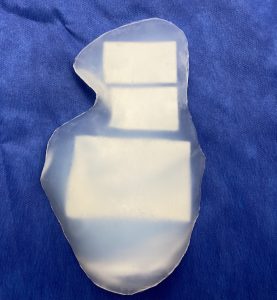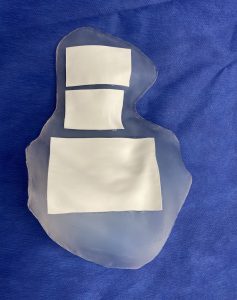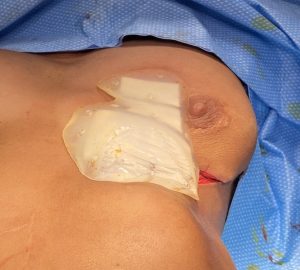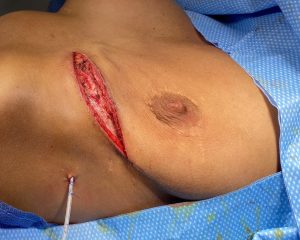Background: In breast augmentation surgery one of the primary goals is symmetry. While the implants may be symmetric in size and volume is not, however, a guarantee that the breasts will be perfectly symmetric afterwards. There are numerous anatomic components around, on top and underneath the breast implants that will play a significant role in how symmetric the two breast mounds will be.
Most of the time in breast augmentation the visible external soft tissue shape of the natural breast mounds is what can have the greatest impact on symmetry. But less commonly the shape of the underlying chest wall can play a major role as well. This is most significantly seen in congenital chest wall deformities such as pectus excavatum and Poland’s syndrome. In these well known chest wall disorder there is a ribcage deformity in which the natural curvature of the ribs is altered to a flatter or even a concave shape. This also can cause a midline deviation of the sternum to the affected side.
In such chest wall deformities this can be expected to affect the appearance of breast augmentation surgery as the base on which the implant sits is different between the two sides. In minor chest wall deformities having one breast implant bigger than the other may produce an acceptable amount of asymmetry. But in more significant chest wall asymmetries the platform on which the breast implant sits may need to be built up for the breast implant to work more effectively.
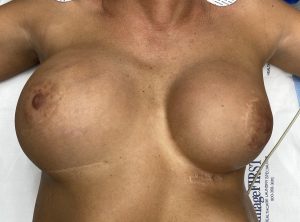
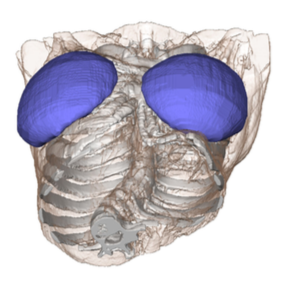
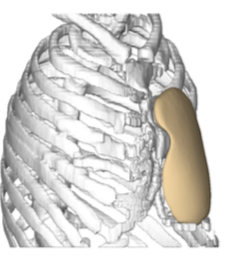
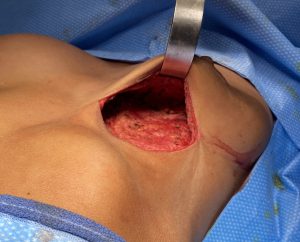
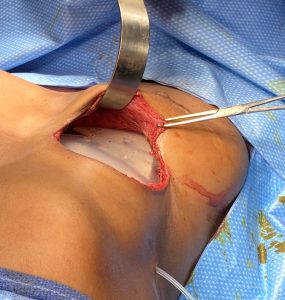
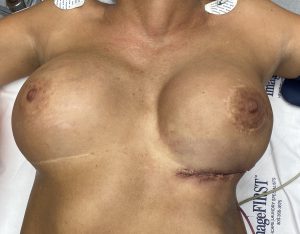
When significant chest wall asymmetry exists due to a ribcage deformity a custom chest wall implant can be designed to even out the two sides of the chest. With improved chest wall symmetry breast implants of a more similar size can be used. The key to using a combination of chest wall and overlying breast implant is to keep two separate pockets as well as create means by which soft tissue fixation to the chest wall implant can occur. (as the material will not hold sutures)
Case Highlights:
1) Congenital chest wall deformities can affect the symmetry and size of breast augmentation surgery.
2) Uneven ‘flooring’ on which the breast implants sit can be hard to overcome merely changing breast implant sizes between the two sides when a major chest wall difference exists.
3) A custom chest wall implant evens out the two sides in certain congenital deformities that makes a breast augmentation result less asymmetric.
Dr. Barry Eppley
Indianapolis, Indiana

